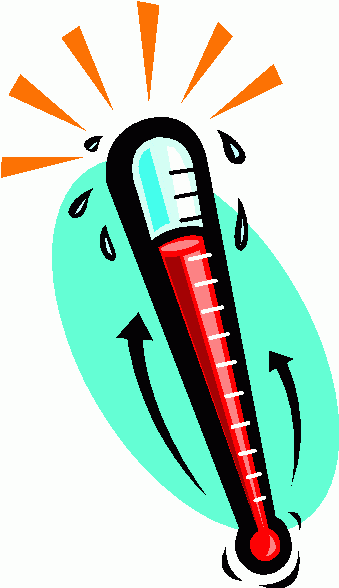Project Managers – Double Check Your Temperature!
We have a temperature sensor that sits outside our bedroom window. It is on the outside of the window, but still in the window well and on the screen. I can see the outside temperature as it is broadcast to a weather station in the house. It is a great way to see how cold it is outside. My wife says it can’t be correct. Why? Because it is up next to the house, and in the window itself. The house will warm it.
 So what does she do to get the outside temperature? She looks at the local news station and sees what they report. What do they report? It is either the temperature at the Airport (about 5 miles south) or the temperature at the University (about 5 miles north east). This, she feels, is the real temperature!
So what does she do to get the outside temperature? She looks at the local news station and sees what they report. What do they report? It is either the temperature at the Airport (about 5 miles south) or the temperature at the University (about 5 miles north east). This, she feels, is the real temperature!
So, how can either temperature be accurate for our needs to any degree? One is right where we want to measure it, but just not in the perfect place. The others are miles away in completely different environments. This situation is very much like the data we get during the execution of a project. It often never measures exactly what we want to measure or if it does, it has flaws and catches (e.g., only updated once a day at midnight, only a subset of the data, etc.) that keep if from having our complete confidence.
What can we do, if anything? In our temperature gauge case, it is actually pretty simple. I just notice, regularly, the difference between what the news stations reports and what our temperature gauge shows. It turns out that they rarely differ by more than one or two degrees (and not consistently high or low either). So setting aside all the “logic” for why they “must not” be right, the bottom line — when actually checked — is that they agree to a great degree. This is a good example of how we often need to take a “belief of obvious and rational certainty” and test it with real data. I find this same approach is frequently necessary in a project or business environment.
Now, even with this observation, my wife just can’t let herself believe that our outside temperature gauge is a good measure and still needs to see the news report before helping the kids dress for school. We will find this same kind of “stickiness” of belief in business and the general solution I’ve found is to consistently use the data in meetings, briefings, dashboards, etc., until people have heard it enough and have compared it to what they believe enough, that they grow confident in it. During this time it is not uncommon to be told to “never show us that data again!” so it often requires personal courage to persevere on this hazardous path of education. Note, it does need to be good data we are showing people or else we will never gain their confidence and we may lose what confidence they did have in what we are telling them.
Too often, belief in what is true and accurate is never confirmed by hard data — because it seems so obvious that it must be true. Taking what we think we know and testing it on occasion is a great project management tool to keep our understanding accurate and up to date. While we often can’t get “perfect data” we can frequently correlate (or compare) related data and increase our confidence in what we know to be the facts of the project. Periodically checking the accuracy of our “temperature gauges” will help ensure that we are never surprised by a project being hotter or colder than we expected.
Do you have a unique project measure not commonly used by others that provides you key insights?